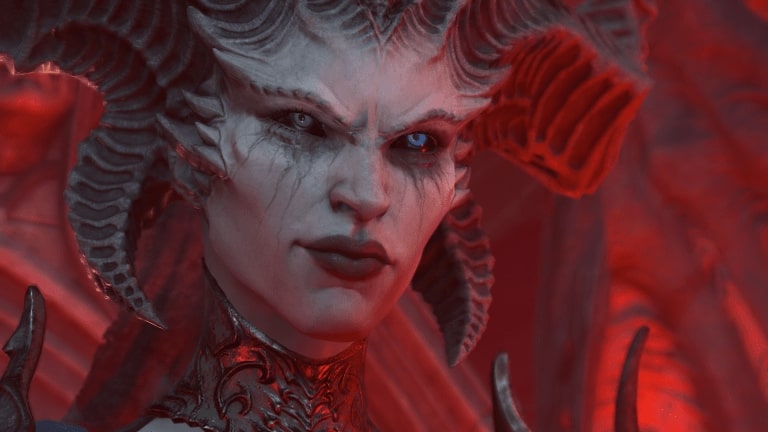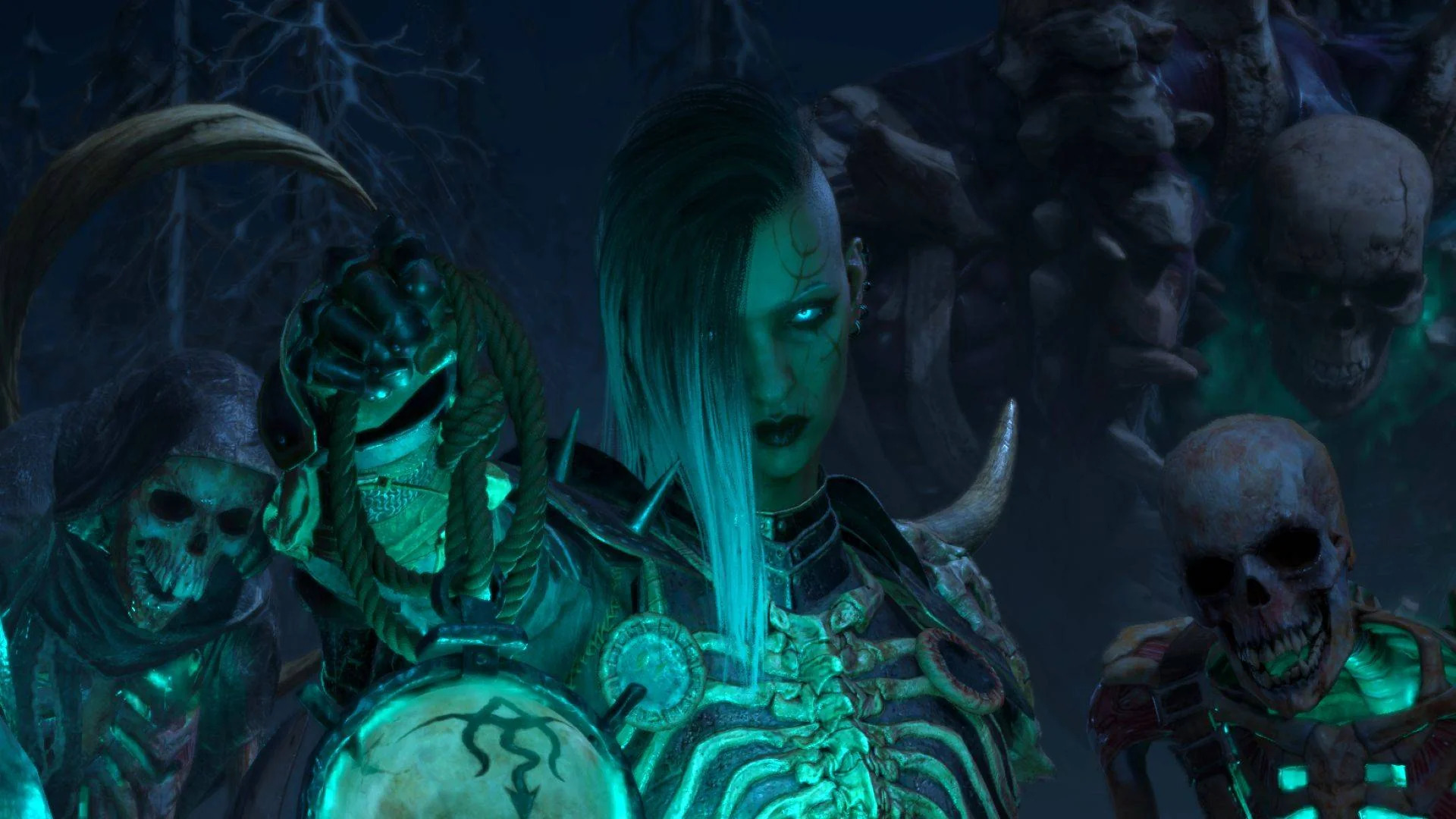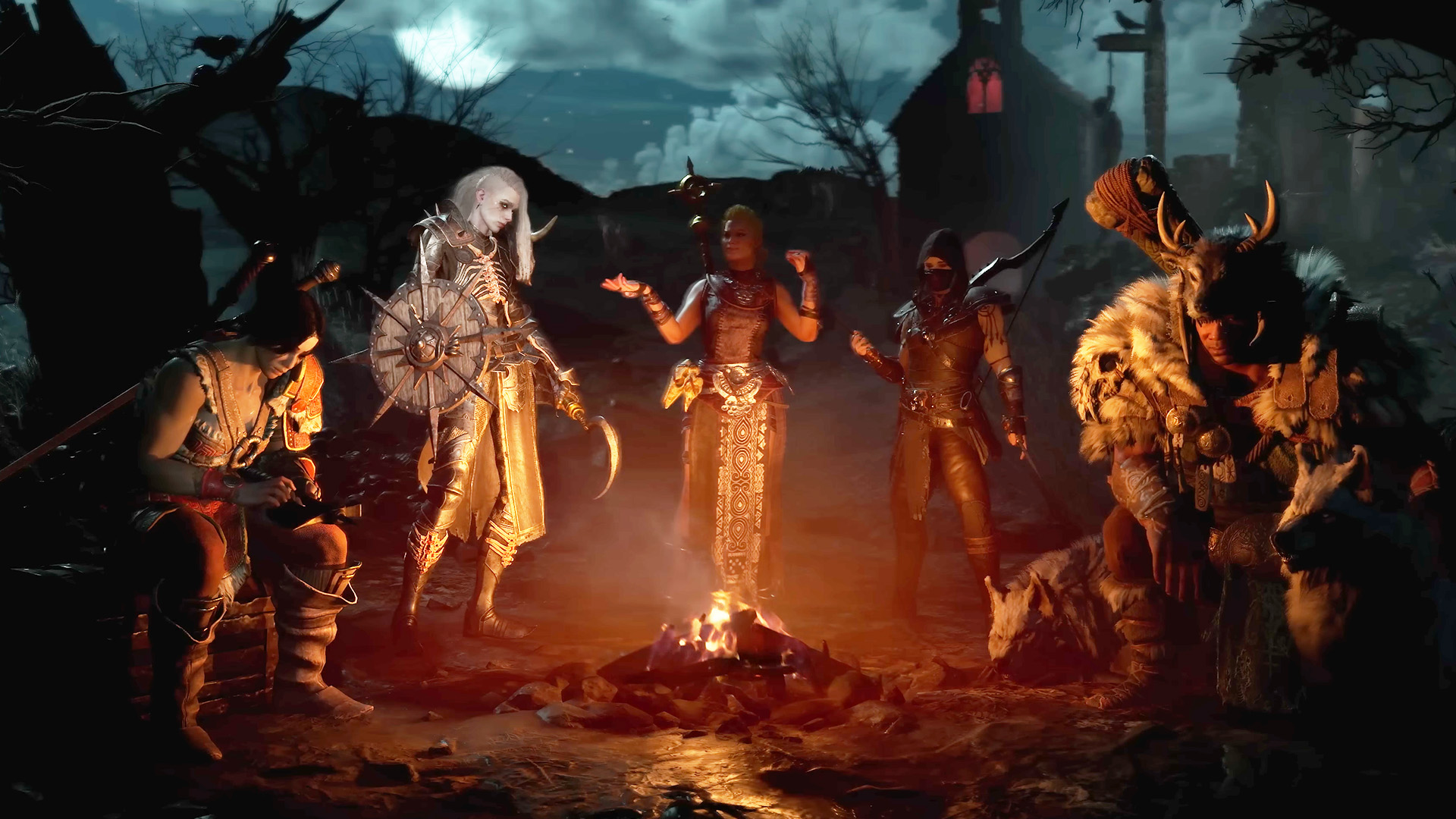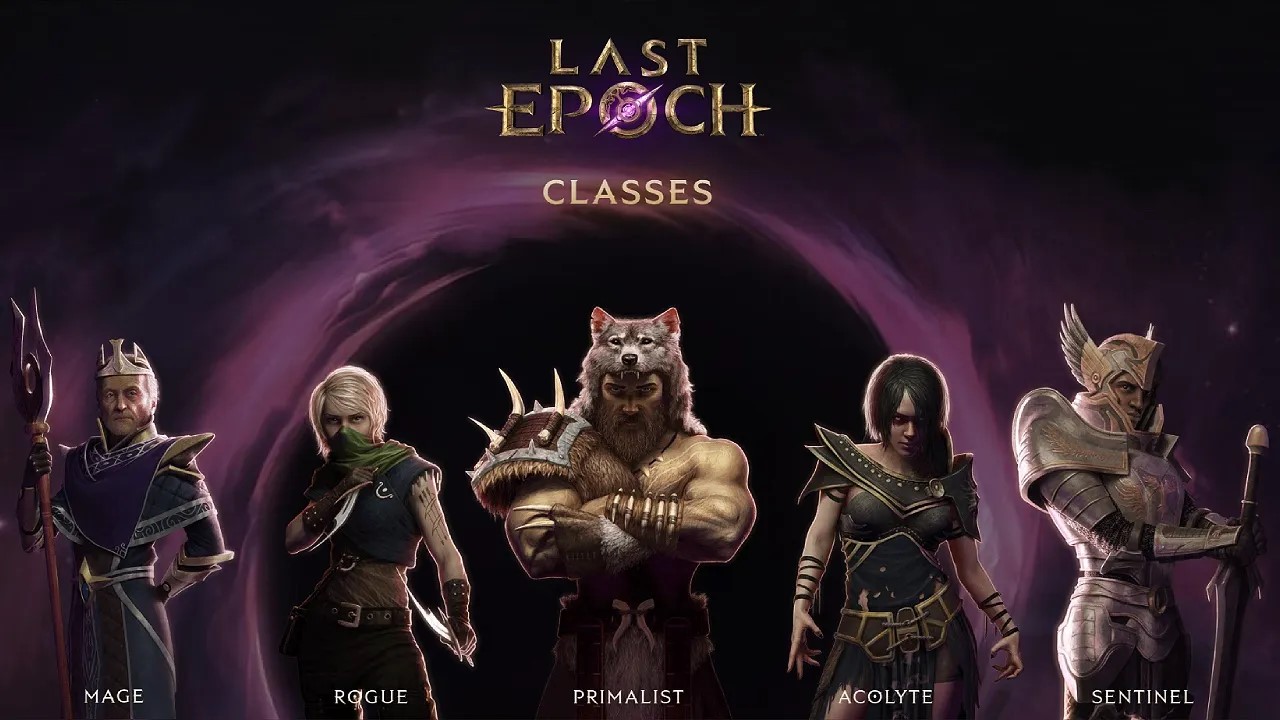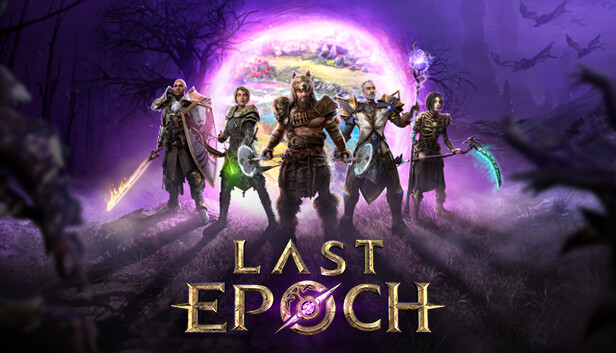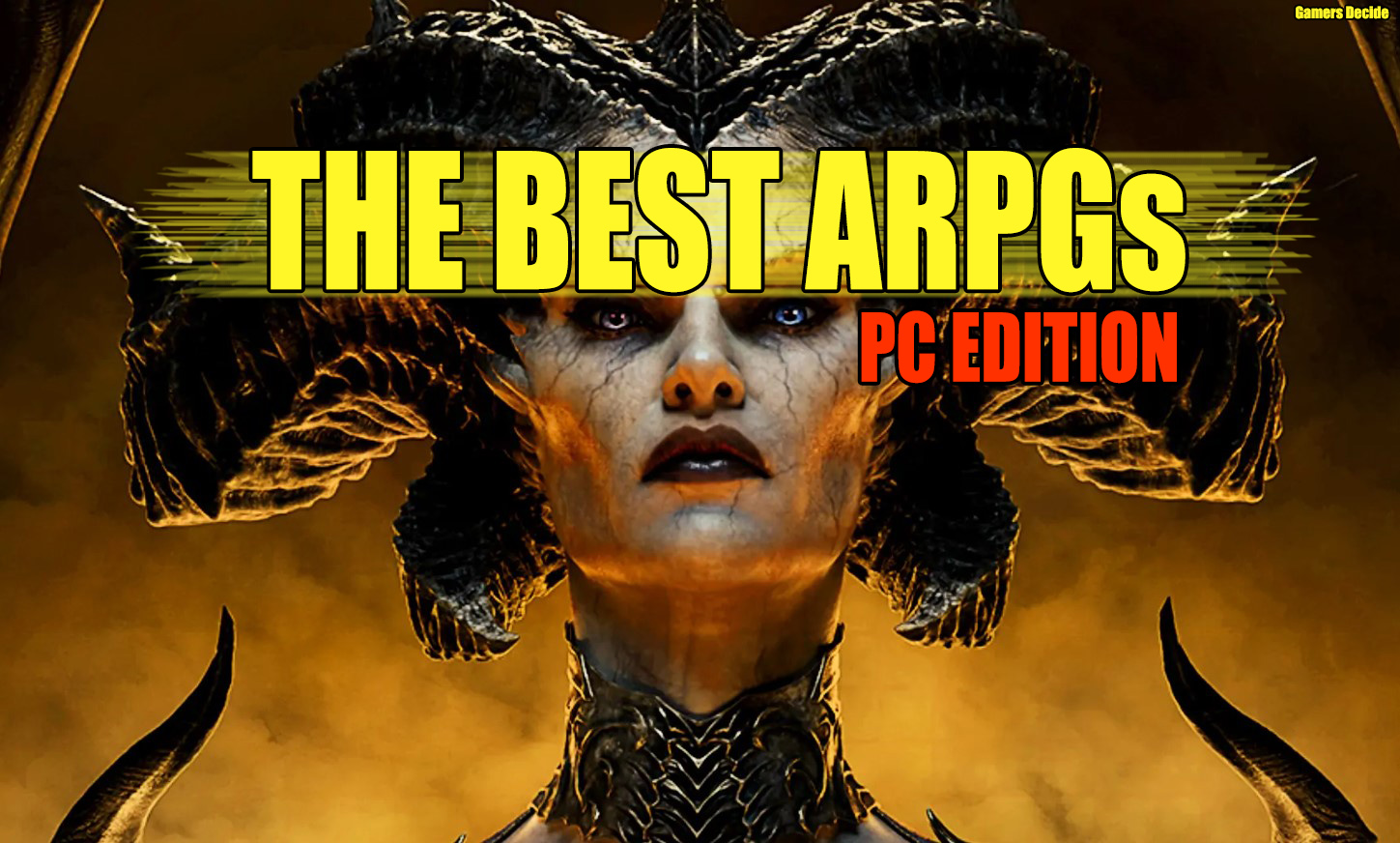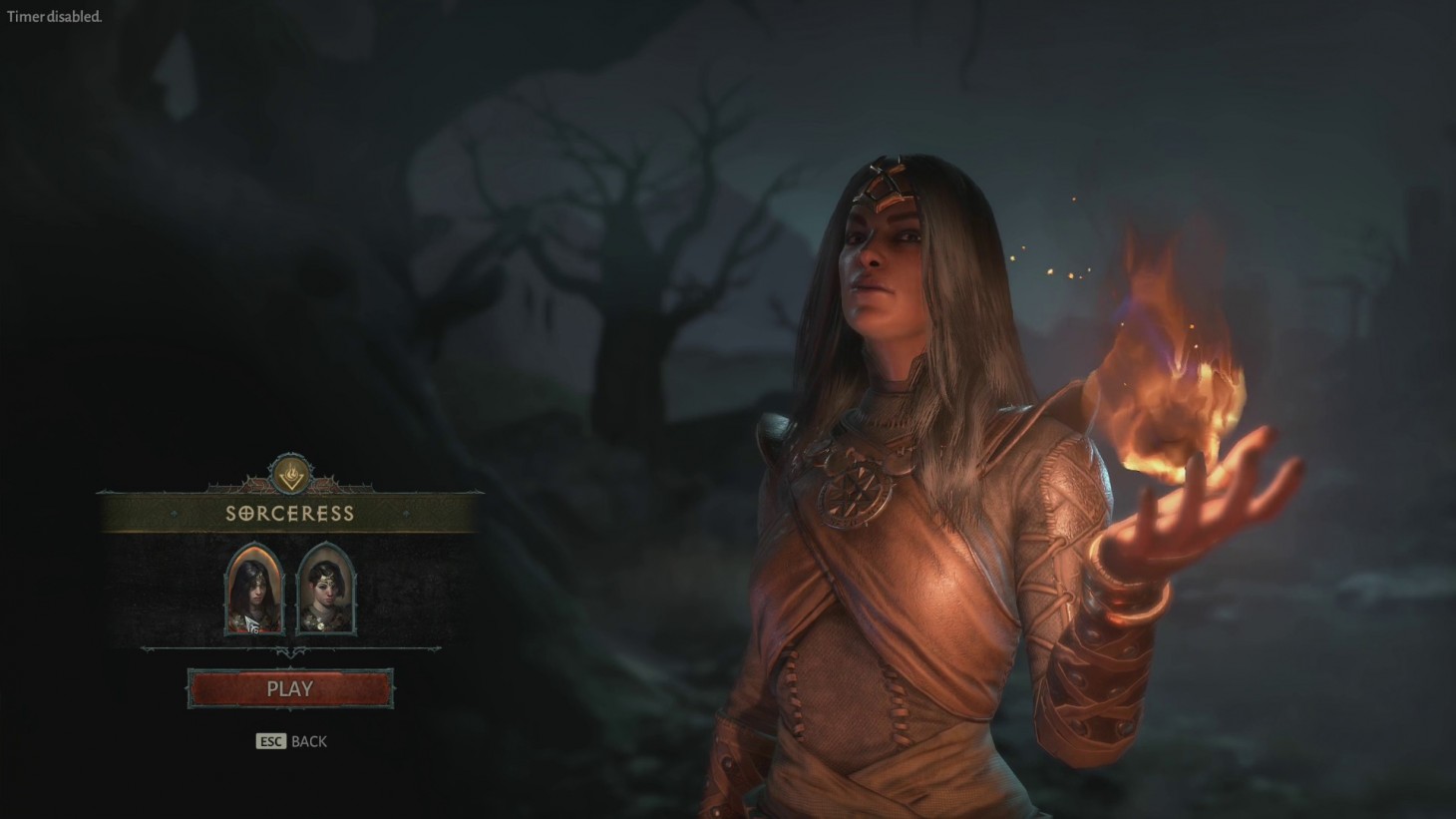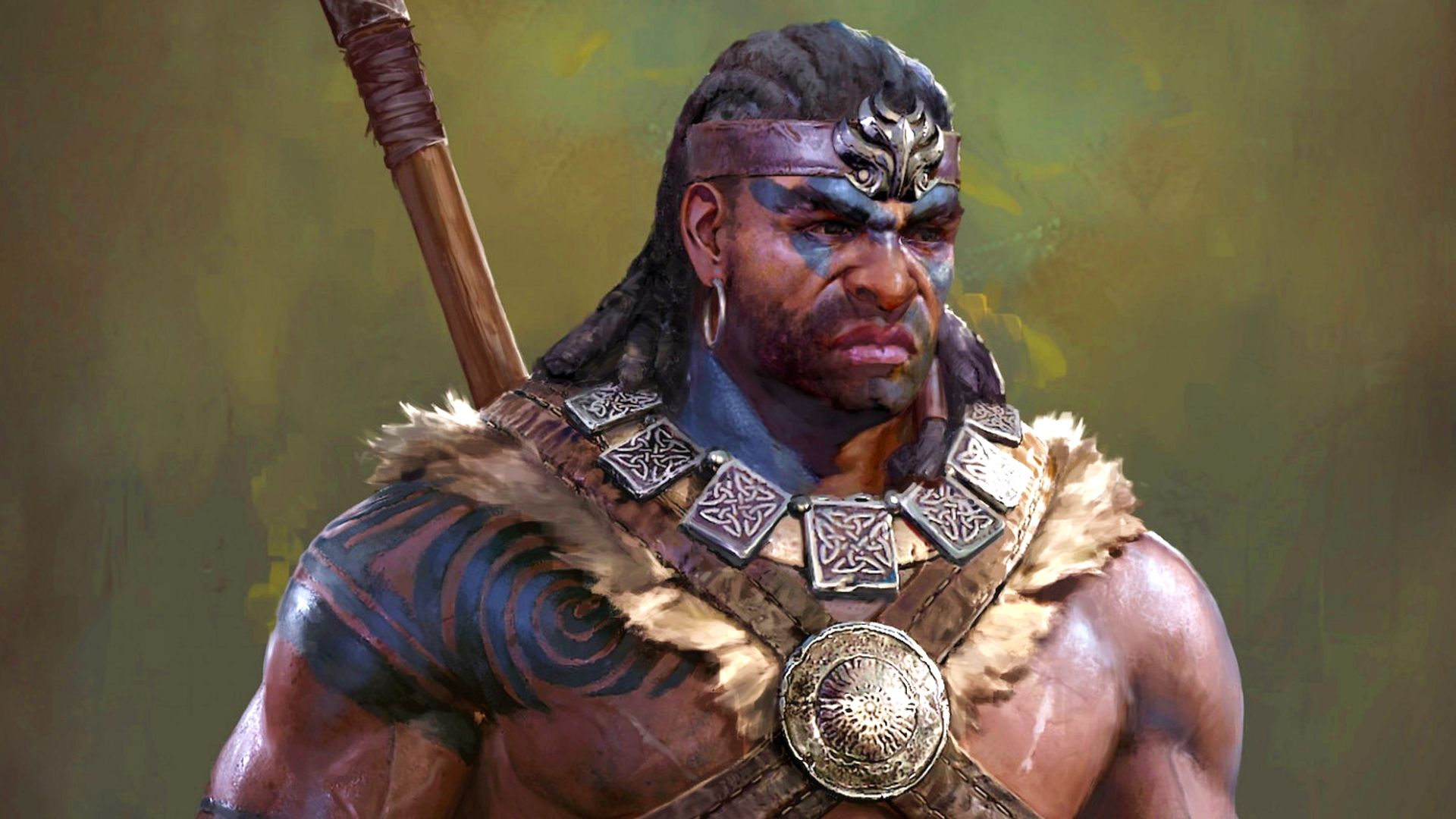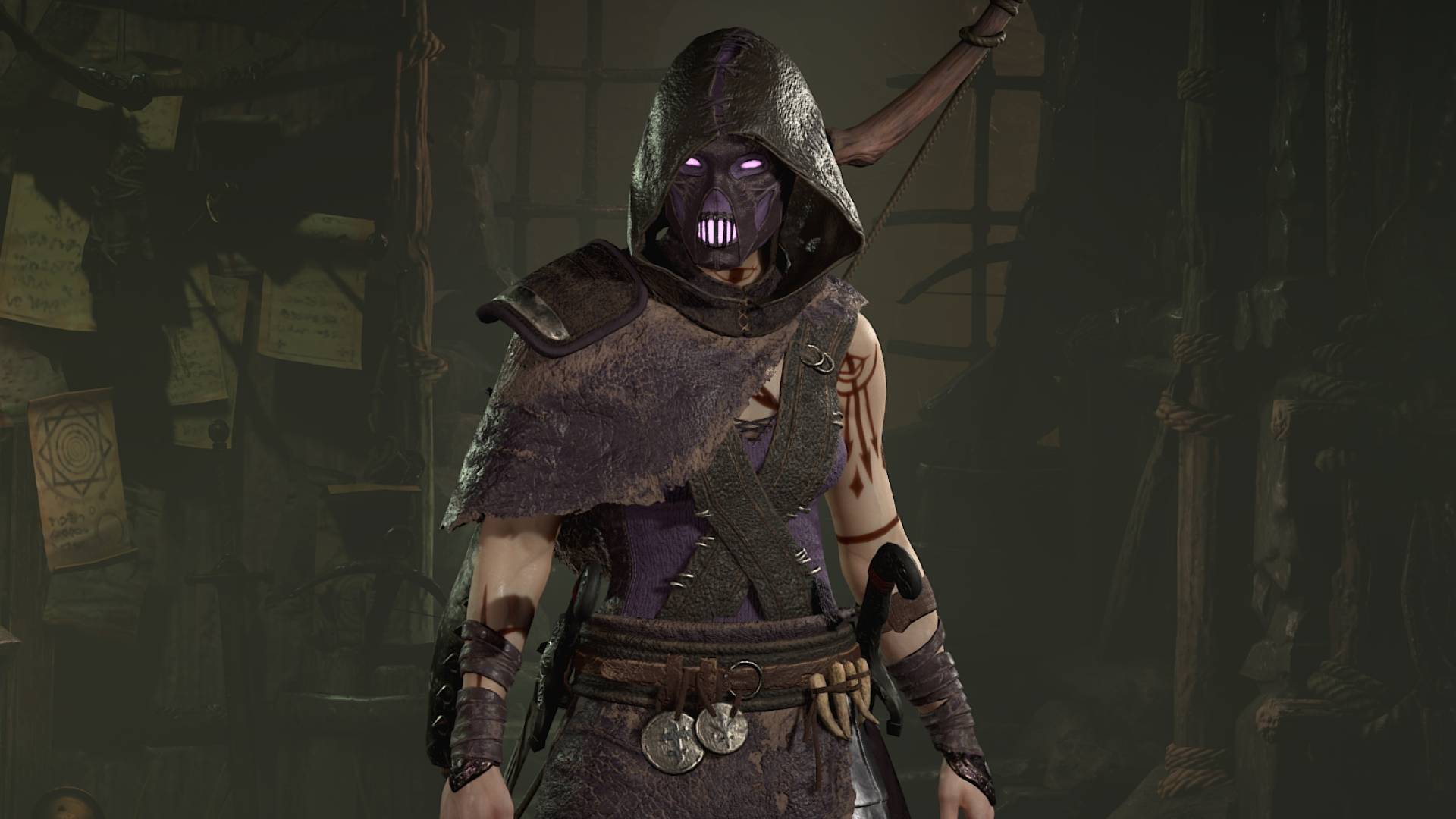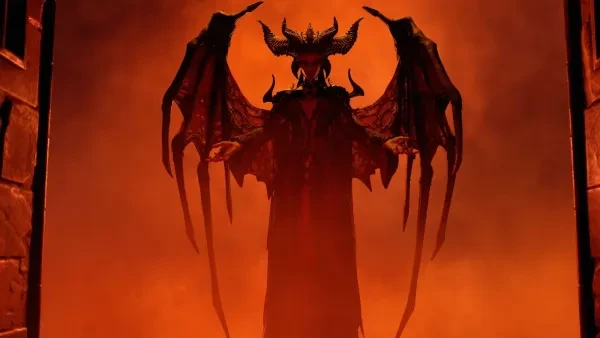
What is Last Epoch?
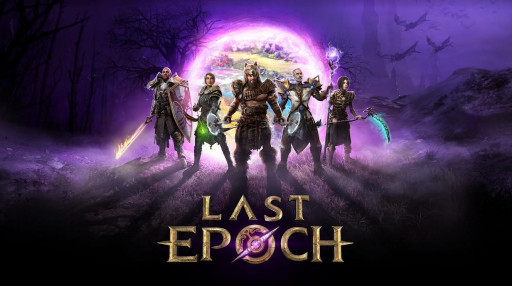
Last Epoch is an online-only action role-playing game (RPG) that combines elements of time travel, dungeon crawling, character customization, and endless re-playability. Developed by Eleventh Hour Games and published by the same studio, it offers an immersive experience for both veterans and newcomers to the RPG genre.
Here are some key features of Last Epoch:
Gameplay:
- Action RPG: The game features hack-and-slash mechanics, where players engage in fast-paced combat against various foes.
- Loot: Explore dangerous dungeons, hunt for epic loot and craft legendary weapons.
- Skill Trees: Unlock the power of over a hundred transformative skill trees, allowing for diverse character builds.
Classes and Masteries:
Begin your adventure as one of five powerful classes.
As you progress, ascend into a unique Mastery Class, which unlocks specialized abilities and build options.
Release Date:
The game was released on February 21, 2024, for platforms including PlayStation 4, PlayStation 5, Xbox One, Xbox Series X and S, and Microsoft Windows.
Editions Available:
- Standard Edition: Includes the base game.
- Digital Deluxe Edition: Offers additional content such as mounts and a digital soundtrack.
- Ultimate Edition: comes with exclusive items like emotes and cosmetic goodies.
Last Epoch invites players to uncover the past, reforge the future, and face dark empires, wrathful gods, and untouched wilds in the world of Eterra. Whether you’re a time-travelling veteran or a fresh adventurer, this game promises an exciting journey through a rich and dynamic universe.
What is Diablo 4?
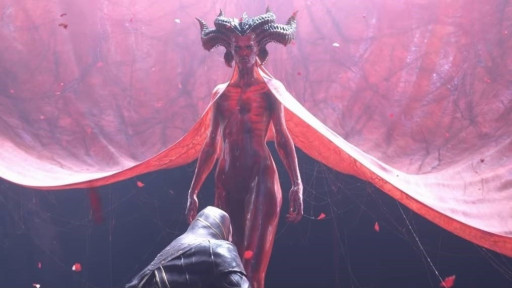
Diablo IV is an online-only action role-playing dungeon crawling game developed and published by Blizzard Entertainment. It is the fourth main instalment in the Diablo series. The game was announced at BlizzCon 2019 and was released on June 5, 2023, for PlayStation 4, PlayStation 5, Xbox One, Xbox Series X and S, and Microsoft Windows. In this epic adventure, players join the fight for Sanctuary, battling against evil forces, mastering numerous skills, exploring horrifying dungeons, and seeking legendary treasures.
Here are some key details about Diablo IV:
- Release Date: October 17, 2023.
- Developer: Blizzard Entertainment, Inc.
- Publisher: Blizzard Entertainment, Inc.
- Gameplay: It’s an action RPG with a focus on hack-and-slash mechanics.
- Content: The game includes the critically acclaimed campaign and new seasonal content.
Editions Available:
- Standard Edition: Includes the Inarius Wings & Inarius Murloc Pet in Diablo III and the Amalgam of Rage Mount in World of Warcraft.
- Digital Deluxe Edition: Offers additional content such as the Temptation Mount, Hellborn Carapace Mount Armor, and more.
- Ultimate Edition: Comes with exclusive items like the Wings of the Creator Emote, Accelerated Battle Pass Unlock, and other cosmetic goodies.
How they stack up:
Last Epoch came out on February 21, 2024, after years of development and open beta, and it was released with a blast of new players and new content. It reached over 250.000 concurrent players for the first week, which caused some heavy server issues, though quickly solved.
It’s a game that most people would say it’s a middle ground between Path of Exile and Diablo 4. And it is without good cause. While it is much easier to get into LE than into PoE, it’s nowhere near as casual-friendly as Diablo.
On the other hand, it does have a lot more complexity in its endgame mechanics and especially the crafting systems than Diablo 4, but not to the point of being overwhelming and requiring a PhD like PoE does.
10. Campaign (and Skips)
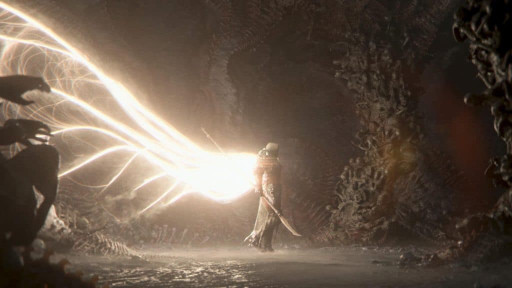
Everyone who has played any aRPG will agree that Diablo 4 has the best campaign of the genre, and it’s mostly because of the art style, voice acting, fantastic animations, deep rich lore, cut-scenes, interesting characters and plotline. While also making you feel like you are a part of the world.
And that is something that though Last Epoch tries to do, with their time jumps from the Divine Era to Imperial, back to Ruined Era, etc, affecting how the world changes, it’s still a fairly simplistic thing that after your first play-through, you basically just want to get it done with. It doesn’t drag you into it, and the animations it has are very… outdated in ways.
But one good thing is that though in D4 you can outright skip the whole campaign if you’ve played it once, LE doesn’t let you skip it entirely. This is a good thing mostly because it gives room for you to explore your new characters without feeling like you’re rushing to the endgame, and gives a sort of progression to your play through. Whereas in D4, you can essentially do all endgame content (except Helltides and Ubers) right from level 1.
9. Inventory Management
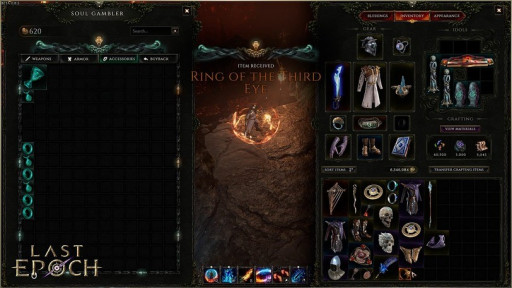
Both games offer the notorious ‘Sort’ button that PoE sorely lacks, and you can buy stash tabs with in-game currency (gold). But their similarities end there.
Diablo 4 has a 1-slot item inventory, where no matter how big the item or equipment is in the game, it will always occupy a single slot in your inventory and stash tab.
While Last Epoch follows the same structure as Path of Exile and Diablo 2, with items varying in size and inventory, ‘Tetris’ matters a lot more, because bigger weapons require more space than an amulet. But the beauty here is that, though it has that ‘issue’, the Sort button helps a ton with cleaning things and making it easy to read and use.
And though there are benefits to the one-slot item system in D4, it makes it hard to visualize whether what you have in your inventory is a Grandfather or a puny dagger at first glance. It reduces the art visibility of the weapon, which is an integral part of medieval fantasy games.
8. Re-specialization
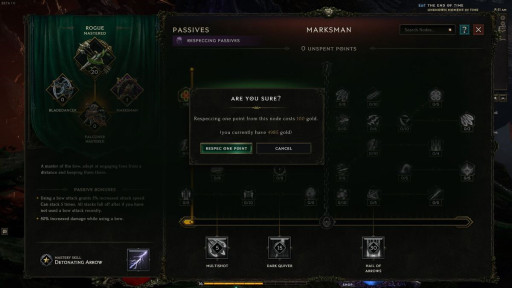
Known mostly as ‘respec’, both games boast great respecing systems, especially for newer players and low-level characters. If you’re playing a Fireball Mage and you see someone using Glacier, and you want to use it yourself, it literally takes less than 10 seconds to respect it. You still have to play for a bit to get back to the level of the skill you were using, but that takes very little time, and the later in the game you do that, the faster it is.
And in Diablo 4, re-specing varies a bit depending on if the skill you’re using requires specific Legendary Aspects, but the skill re-specing is as simple as clicking to remove and adding another skill of your choice, for a very, very small amount of gold.
While D4 doesn’t have a Passive Tree like Last Epoch, it has the Paragon Board, which works basically the same manner. You pay some gold (later on, it gets as expensive as spending 5 to 10 million gold, not a small amount, but very affordable) to reset your Paragon Board.
And for LE, you need to visit an NPC in certain towns (End of Time has one) to re-spec your passive tree, also for a small fee of gold.
7. Loot filter
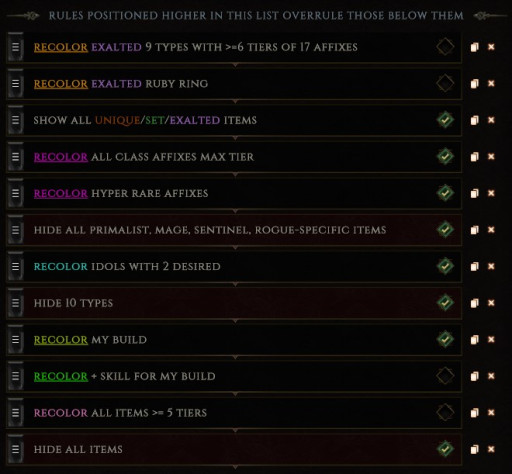
Loot filters are some of the most basic concepts that many aRPGs have, but one that still seems to elude D4 devs. While they always say that loot filters are a bandaid to a deeper problem in itemization, a philosophy that is shared by PoE Devs like Johnathan Rogers, at least in PoE we still have a massively in-depth and customizable Loot Filter system.
And Last Epoch took that system and essentially made it better because items don’t need to be identified to be read by the loot filter. So you can customize it to your heart’s content, and it also means that each character you create will require a loot filter specific to the build you’re playing.
Meanwhile, Diablo 4 is littered with useless items on the ground and no way of filtering them out. They did marginally improve the issue by auto-scrapping Normals and Sacred items (non-Legendary only) while in WT4, but we’re still forced to pick up all items in order to see if they’re good or not. Something a Loot Filter would massively improve.
The best part of LE’s loot filter is that it’s entirely in-game modifiable, but you can also copy someone else’s loot filter with a simple Copy-Paste! It’s a massive QoL that D4 sorely needs.
6. Trading/Factions
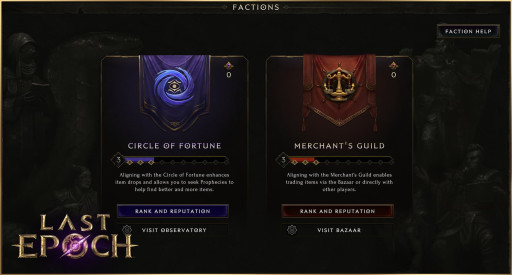
Trading is a massive part of many aRPGs, with many ramifications and dangerous abusable scenarios. As such, all games that partake in in-game trading between players create walls of friction to try and reduce RMT (real-money transactions) that can quickly destabilise the game economy.
Both Diablo 4 and LE created their trading system with this in mind. Originally, during early access, LE had no trading, and even the coop gameplay was subpar, without allowing you to trade items with friends unless you were both in the same instance at the same time when an item dropped for one of you.
With 1.0, they introduced the Factions, the Merchant’s Guild and the Circle of Fortune. You have to be a Merchant Guild member to buy and sell items through a sort of auction house in-game. It came with several barriers of entry and it’s definitely a bad system currently, with too much friction to work, but at the same time, it’s easy to gear a basic character for basically nothing right from the start.
While D4’s trading system only works on Rare Items, never legendary or Unique items, and it’s primarily to buy other items ( what we call 3/4s or 4/4 items), for your build, or for Bossing Material.
The way they set up their friction system is by making it so you have to find the item outside on a website, then copy the person’s BlizzTag, and get them in your party and the same instance.
Basically, both games, while they do allow trading, have a horribly inconvenient trading system made to slow down the trading experience and have serious flaws that need addressing.
5. Monetization System

While both Last Epoch and Diablo 4 are Pay to Play, one-time purchases, LE has a much lower price of entry, at around $35, while D4’s cheapest edition is $70.
Neither of them, so far, has any sort of Pay to Win monetization, and both use Micro-transactions, in particular for Cosmetics, as another way of revenue.
But unlike LE, Diablo 4 went further into the MTX ‘meta’ and started a Seasonal Battle Pass that grants you even more cosmetics and some platinum back (the currency for cosmetics in-game) the more you play. It brought a lot of controversy when it was first introduced, and there are still some issues with it, but it’s been mostly fine.
4. Crafting

Here’s where we start to see the holes in Diablo 4 and why LE is bringing so much attention despite being a diminutive company in comparison to Blizzard.
The biggest, current complaint about D4 is the itemization system, and how stale and uninspired it is, that punishes you for playing and you can’t ever upgrade your items. Or how anything on the ground is always trash and vendor food.
And though Last Epoch took some inspiration, especially with the way they order their mods, from PoE, LE made their crafting system in a wholly unique manner, where you want to interact with it right from the start.
It’s an integral part, and not something exclusive to the big brains of the community like it is in PoE. It’s casual enough that anyone can learn and get good at it, without needing guides, and you don’t get supremely punished for it, since materials are account-bound, and not sellable.
It promotes a massive amount of build diversity, it’s rich and complex, but also simple, and though you can get the hang of it pretty quickly, it’s still difficult enough to master, and it retains some RNG aspects that all aRPGs embody.
3. Class Masteries
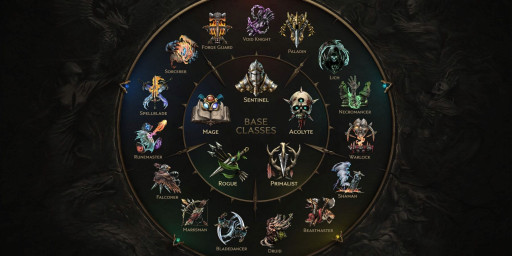
While both D4 and LE have 5 classes, Barbarian, Necromancer, Rogue, Sorcerer and Druid for Diablo 4, and Sentinel, Rogue, Acolyte, Mage and Primalist for LE, with all of them having similar archetypes and concepts, the biggest difference stems from the fact that Last Epoch also has 3 subclasses for each of their main classes.
- Acolyte
- Masteries: Lich (blood magic), Necromancer (undead thralls), Warlock (curses and hexes).
- Mage
- Mastereries: Runemaster (offensive wards), Sorcerer (arcane devastation), Spellblade (martial spellcasting).
- Primalist
- Masteries: Beastmaster (animal command), Druid (nature's fury), Shaman (storm and totems).
- Rogue
- Masteries: Bladedancer (agility and dual blades), Falconer (ranged attacks with falcon companions), Marksman (powerful ranged shots).
- Sentinel
- Masteries: Void Knight (dark tanking), Forge Guard (craftsmanship and resilience), Paladin (divine martial and healing).
You get access to these subclasses, or Master Classes, right at the start of the game, around level 15 or so, and from then on, you can spec into more points into all 3 Mastery Passive Trees, though not fully onto the other ones you didn’t pick. They also come with inherent bonuses for each Subclass, so keep that in mind, because you cannot Respec Masteries.
2. Skill Tree
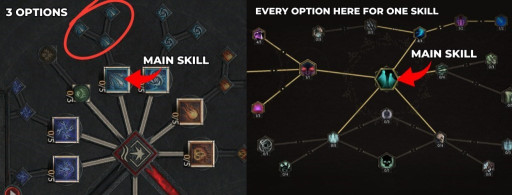
Yet another thing that Last Epoch does supremely well, even better, in cases, than PoE, giving all the power to the skill itself, and not gating it behind Skill Gems and Supports.
Each skill in the game has anything from 15 to 30 nodes that you can allocate points into it, as you level, up to 20 base (you can get increases from gear), which will substantially change your skill. You can, for instance, instead of having an army of Wraiths, have only one hench one. Or instead of having your Ballistae act like minions, shooting enemies for you, they can explode and cover the screen with their damage.
And again, as the motto of the game is re-specing made easy, it’s super easy to change skills around and see what you prefer and min-max however you like.
And that’s something that, though D4 has a little bit, it is extremely limited with only 2 choices of specialization for each main skill, and no more than 3 Legendary aspects that may interact with your skill of choice at any time.
Not to mention unique items that can boost or change the skill significantly, or even proc other skills. And it’s extremely easy to switch things around, without having to sacrifice gear slots for it, just to try it, or revert back if you don’t like it.
1. Endgame Systems
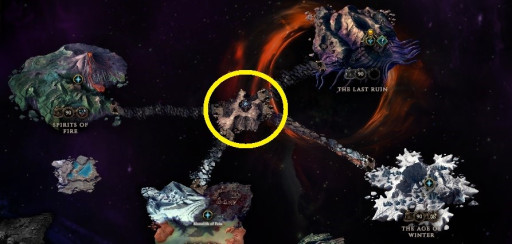
This is by far the biggest weakness of Diablo 4. While Blizzard keeps promising they’ll add more endgame content, and they have in some ways, with Nightmare Vaults and Uber Bosses, as well as Abattoir of Zir during Season 2, and now the Gauntlet in Season 3, the game after level 70 just feels stale and boring, without much enjoyment to be had for many players.
The Nightmare Dungeon aspect, of grinding hours and hours to level up Glyphs is repetitive and tiring, with endless Helltides runs to amass enough Duriel Material to farm for the Uniques making it feel like a chore instead of a game.
And Last Epoch, though it does suffer from staleness after a certain point, has a lot of variety and different activities you can do during endgame, not to mention being able to change your build easily means you get to experiment with everything without much nuisance.
Not only is the Monolith system complex and interesting, but it also feels like we have a visual progression of what we’ve done, and we have complete agency over what we are farming for, in regards to upgrades or Uniques. Empowered Monoliths essentially scale infinitely, so you will always have harder content to throw yourself into, just like the leaderboards in Arena, with its endless mode.
Both games have a lot to improve, and according to Eleventh Hour Gaming (LE’s developer), they’re going to be introducing more content come the next Cycle, 1.1. So we’ll have to see what will happen.

